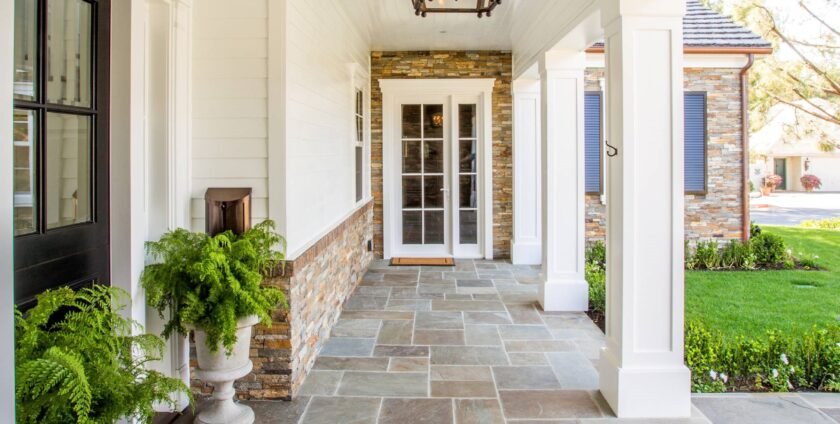
Restoring a stone surface on a porch can be a rewarding project that enhances the appearance and durability of your outdoor space. Whether your porch is made of natural stone like granite, marble, limestone, or manufactured stone, proper restoration will revitalize its beauty and protect it from wear and tear. Here’s a step-by-step guide to help you with the process:
- Assessment: Inspect the entire porch surface to identify the extent of the damage and the type of stones used. Look for cracks, chips, stains, and any other imperfections that need attention.
- Cleaning: Before starting any restoration work, thoroughly clean the stone surface to remove dirt, debris, algae, and any loose particles. You can use a mixture of mild soap and water or a stone-specific cleaner. Avoid using harsh chemicals or acidic cleaners as they may damage the stone.
- Stain and Mildew Removal: If there are stubborn stains or mildew on the stone, you can use a poultice made of baking soda and water to draw out the stains. Apply the poultice on the stained areas, cover it with plastic wrap, and let it sit overnight before removing and cleaning the area.
- Repair: Address any cracks or chips on the stone surface. Small cracks can be filled with a stone epoxy or resin, while larger repairs might require professional assistance.
- Grinding and Honing: If the stone surface has significant scratches, etchings, or dull spots, you might need to grind and hone the stone. This process involves using abrasive materials to smooth the surface gradually. This step requires special equipment and expertise, so consider hiring a professional if needed.
- Polishing: Once the stone surface is smooth and honed, you can proceed with polishing. Use a stone-specific polishing compound and a buffing machine to achieve a shiny finish. Polishing will bring out the natural luster of the stone.
- Sealing: To protect the newly restored stone surface, apply a high-quality stone sealer. The sealer will help prevent stains, moisture absorption, and damage from UV rays. Follow the manufacturer’s instructions for the application process.
- Regular Maintenance: After the restoration is complete, ensure regular maintenance of the stone surface. Sweep away debris, clean spills promptly, and avoid using harsh chemicals that could degrade the sealer.
Remember that stone restoration can be labor-intensive and requires proper knowledge of different stone types. For complex restoration projects, it’s best to seek professional help from a stone restoration expert who can ensure the job is done correctly and efficiently.
If you think that your natural stone in living room might need repairs feel free to contact us.
We are ready to give you free quote.
- By: Natural Stone Restoration" >Natural Stone Restoration
- Category: Articles
- 0 comment



